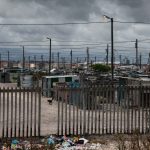Equality court sets new policing precedent
The Western Cape court has ruled that the under-allocation of police resources in Khayelitsha amounts to unfair discrimination based on race and socioeconomic status.
Author:
27 March 2019

In what has been hailed a “groundbreaking judgment”, the Western Cape equality court has ruled that poverty constitutes grounds for unfair discrimination.
The court found that the allocation of police resources in the Western Cape unfairly discriminated against black and poor people on the basis of race and poverty.
The Social Justice Coalition (SJC), Equal Education and the Nyanga Community Policing Forum challenged the minister of police and others for the uneven distribution of police resources in black and poor communities.
In making these claims, the organisations relied on the Promotion of Equality and Prevention of Unfair Discrimination Act, saying that the lack of police resources amounted to prohibited forms of discrimination.
Lead-up to the case
After a decade of struggle for safety and justice, social movements in and around Khayelitsha petitioned the provincial government to initiate a commission of inquiry into the inefficiency of the South African Police Service (SAPS) and the breakdown of its relationship with communities.
The Western Cape government conceded to the demand and initiated the O’Regan-Pikoli Commission of Inquiry in 2012. But legal challenges lodged by the ministry of police, from the high court all the way to the Constitutional Court, delayed the work of the commission.
Despite the challenges, the commission continued after the Constitutional Court gave it the green light. It concluded in 2014 and made 20 recommendations for the Western Cape government to implement.
Judge MJ Dolamo’s judgment read that the “theoretical human resources requirement (THRR) was highly complex; was neither publicly available nor debated, even within the SAPS or by key oversight bodies such as the national Parliament and the THRR was not necessarily accurate; and that the weighting attached to different environmental factors may result in over- or underestimation of policing implications of these factors to Khayelitsha and other areas which are occupied predominantly by black and poor people.”
Following the failure of the Western Cape government to implement the 20 recommendations, the SJC approached the equality court.
Discriminatory model
“The fact that we had to take the minister and the SAPS to court to give substance to Recommendation 7, which dealt with the discriminatory allocation of police resources, reveals a lack of willingness from the SAPS to implement the recommendations,” said activist Dalli Weyers, co-head of programmes at the SJC.
The SJC told the equality court that the THRR model, used to allocate resources to all police stations, indirectly amounted to unfair discrimination on the basis of race and poverty.
Related article:
The THRR “system is said to have been developed to calculate the number of posts per level required to perform the duties associated with police stations. It presents the ideal number of employees to be placed at a specific police station,” read the judgment.
Africa Criminal Justice Reform (ACJR) researcher Jean Redpath gave expert evidence at the equality court, on which the court relied heavily in its judgment. According to her written affidavit, 283 police personnel are allocated for every 100 000 citizens.
Looking specifically into policing areas in the Western Cape, Redpath found that the “most resourced was 2 636 per 100 000 in the policing area Table Bay Harbour and least resourced area 111 per 100 000 in Harare.”
Weyers told New Frame that “the data reveals that not enough has been done. The equality court judgment in December underscores this.”
Skewed allocation
For Weyers, working-class and poor communities “with high levels of violent contact crimes are still receiving less police resources per capita than wealthier, predominantly white and safer suburbs.”
Redpath puts this into perspective, saying that “all three Khayelitsha policing areas demonstrated less than the average allocation, with Khayelitsha at 190 per 100 000.”
The problem isn’t with population allocation alone. The allocation of police resources based on reported crimes presents a problem as well, said Redpath: “The problem with resource-allocation approach based solely on total reported crime is that areas where there is significant under-reporting of crime will then be under-resourced in respect of the true crime rate (as opposed to reported crime rate).
“Furthermore, areas already oversupplied with human resources will continue to be over-resourced as they are likely to have better reporting rates. In other words, the skewed allocation leads to skewed reporting trends, which in turn leads to further skewed allocation.”
Setting a legal precedent
In applying the necessary legal test, the court found that there was a prima facie case of unfair discrimination on the basis of race. The court went further, saying that a person can also be discriminated against on the basis of their socioeconomic status. It was expressly recognised for the first time that people cannot be discriminated against on the grounds of poverty.
In making this finding, Dolamo said that “Twenty-five years into our democracy people, black people in particular, still live under conditions which existed during the apartheid system of government. The dawn of democracy has not changed the lot of the people of Khayelitsha. They continue to live in informal settlements where the provisions of services are non-existent or at a minimum.”
Related article:
“This is more glaring where a comparison is made with the more affluent areas, mainly occupied by a privileged minority. The unfortunate reality is that the residents of Khayelitsha, who are predominantly black, continue to receive inferior services, including services from the SAPS,” and this amounts to unfair discrimination.
The SJC confirmed to New Frame that the “SAPS has now withdrawn its appeal and we have, as a result, withdrawn our cross-appeal. Both parties will now return to court to determine what the remedy should be to address the discriminatory allocation of police resources.”
Weyers said the SJC will embark on a mass campaign for visible policing in shack settlements and “for the City of Cape Town to address the lack of effective public lighting in black poor and working-class areas”. Although this was not specifically recommended, “the commission did find that inadequate and ineffective lighting contributed to a lack of safety and made policing even more challenging”.


